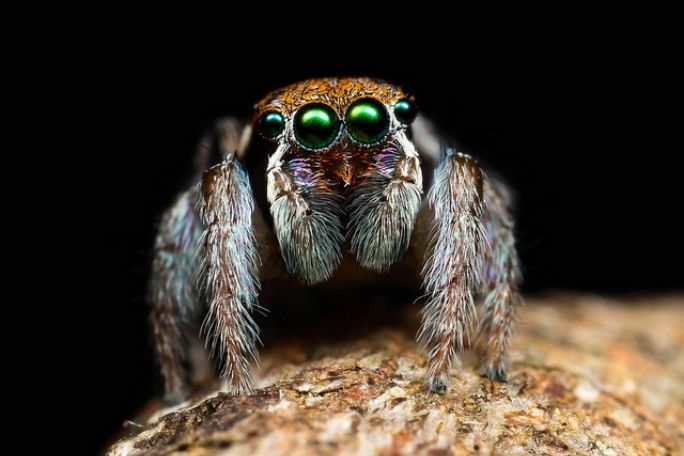Lesson summary
Students will consider Indigenous and Western world views of the species in their backyard. As part of this, students will learn about classification systems and consider the value of looking at the natural world through differing perspectives.
Learning intentions:
Students will...
- understand that science and scientists are all around us
- understand why open questions are important in finding out more information from someone
- understand that stories shape our world and can give us scientific information
- understand how a classification system works when identifying animals
- understand that there are different perspectives at how we see animals.
Success criteria:
Students can...
- explain why scientists are not just someone in a lab coat
- understand the difference between closed and open questions
- find local stories from members of the community about local animals
- describe parts of the anatomy of animals
- describe two different ways of looking at the same animal.
Lesson guides and printables
Lesson details
Curriculum mapping
Australian Curriculum content descriptions:
Year 5 English:
- Use appropriate interaction skills including paraphrasing and questioning to clarify meaning, make connections to own experience, and present and justify an opinion or idea (AC9E5LY02)
- Plan, create, rehearse and deliver spoken and multimodal presentations that include relevant, elaborated ideas, sequencing ideas and using complex sentences, specialist and technical vocabulary, pitch, tone, pace, volume, and visual and digital features (AC9E5LY07)
Year 5 Science:
- Examine how particular structural features and behaviours of living things enable their survival in specific habitats (AC9S5U01)
- Write and create texts to communicate ideas and findings for specific purposes and audiences, including selection of language features, using digital tools as appropriate (AC9S5I06)
Year 6 English:
- Use interaction skills and awareness of formality when paraphrasing, questioning, clarifying and interrogating ideas, developing and supporting arguments, and sharing and evaluating information, experiences and opinions (AC9E6LY02)
- Analyse how text structures and language features work together to meet the purpose of a text, and engage and influence audiences (AC9E6LY03)
Year 6 Science:
- Investigate the physical conditions of a habitat and analyse how the growth and survival of living things is affected by changing physical conditions (AC9S6U01)
- Write and create texts to communicate ideas and findings for specific purposes and audiences, including selection of language features, using digital tools as appropriate (AC9S6I06)
Syllabus outcomes: EN3-4A, EN3-1A, ST3-7PW, ST3-4WS
General capabilities: Literacy, Intercultural Understanding, Critical and Creative Thinking.
Cross-curriculum priority: Sustainability.
Relevant parts of Year 5 English achievement standards: Students interact with others, and listen to and create spoken and/or multimodal texts including literary texts. They use language features including topic-specific vocabulary and literary devices, and/or multimodal features and features of voice.
Relevant parts of Year 5 Science achievement standards: Students explain how the form and behaviour of living things enables survival. They use language features that reflect their purpose and audience when communicating their ideas and findings.
Relevant parts of Year 6 English achievement standards: Students create written and/or multimodal texts, including literary texts, for particular purposes and audiences, developing, explaining and elaborating on relevant ideas from topics or texts.
Relevant parts of Year 6 Science achievement standards: Students explain how changes in physical conditions affect living things. They select and use language features effectively for their purpose and audience when communicating their ideas and findings.
This lesson is part of the wider unit of work Backyard Bush Blitz – Years 5 & 6
Resources required
- Bush Blitz Slides
- Insect Anatomy
- Insect Lifecycles
- iPad (optional)
- Parts Of An Insect Worksheet
- Student worksheet – one copy per student
Skills
This lesson is designed to build students’ competencies in the following skills:
- Communication
- Critical thinking
- Creativity
- Cultural understanding
Additional info
Time required: 150+ mins
Level of teacher scaffolding: Medium to high- teachers will need to scaffold different parts of the lesson plan
This is an original Cool+ lesson.


Welcome back!
Don't have an account yet?
Log in with:
By signing up to Cool.org you consent and agree to Cool's privacy policy to
store, manage and process your personal information. To read more, please see
our privacy policy here(Opens in new tab).
Create your free Cool.org account.
Many of our resources are free, with an option to upgrade to Cool+ for premium content.
Already have an account?
Sign up with:
By signing up to Cool.org you consent and agree to Cool's privacy policy to
store, manage and process your personal information. To read more, please see
our privacy policy here(Opens in new tab).